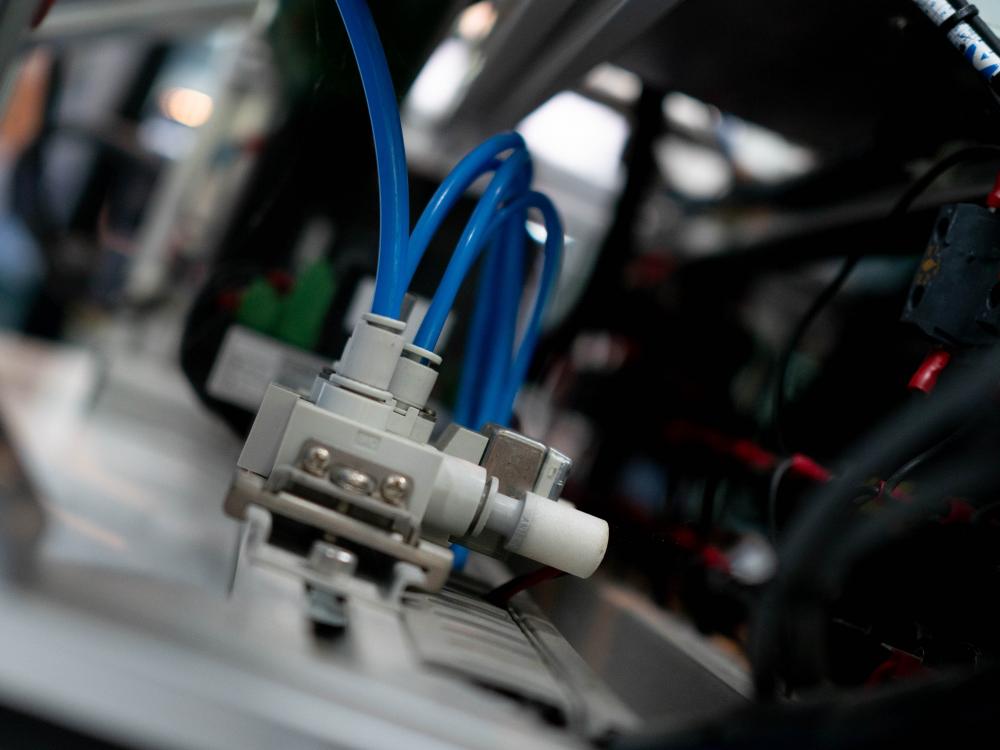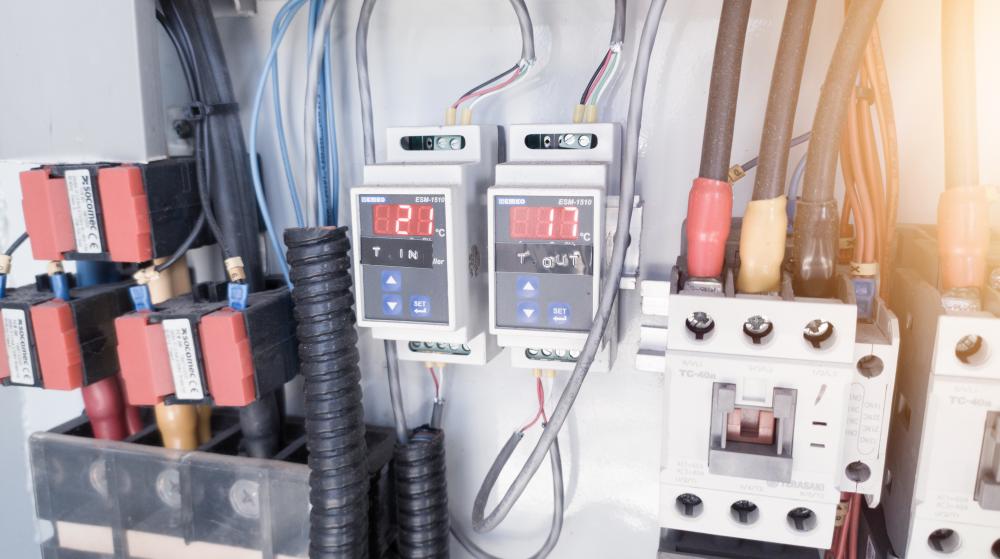Inrush Current Limiter

Understanding Inrush Current Limiters
When it comes to managing the initial surge of current that electrical devices experience upon startup, inrush current limiters are indispensable. At Western Electronic Components (WECC), we've seen firsthand how crucial these components are for protecting circuits from the potentially damaging effects of inrush current. This surge can cause significant stress to electronic components, leading to premature failure or reduced operational lifespan. In this narrative, we aim to shed light on the intricacies of inrush current limiters, drawing from our extensive experience in the field of thermistors.
The Role of Inrush Current Limiters
The Guardians of Circuitry
Inrush current limiters serve as the guardians of your circuitry, stepping into the breach to absorb the initial shock of power that accompanies the switching on of electrical devices. This critical function prevents damage to sensitive components and avoids nuisance tripping of circuit protection devices. Imagine turning on a powerful motor or a large bank of LED lights without an inrush current limiter in place; the sudden demand for current could easily overwhelm the system.
Beyond Protection
But their utility extends beyond just protection. Inrush current limiters also play a pivotal role in enhancing the efficiency and reliability of electrical systems. By smoothing the initial power spike, these components help to ensure a stable and consistent operation. This stability is particularly important in applications where precision and reliability are paramount, such as in medical devices or in aerospace technology.
Types of Inrush Current Limiters
NTC Thermistors
Negative Temperature Coefficient (NTC) thermistors are a popular choice for inrush current limitation. These devices decrease in resistance as their temperature increases, which makes them ideal for absorbing and then gradually reducing the inrush current. At WECC, we've supplied NTC thermistors to a wide array of industries, appreciating their versatility and effectiveness.
PTC Thermistors
Positive Temperature Coefficient (PTC) thermistors, on the other hand, increase in resistance as their temperature rises. While less commonly used for inrush current limitation compared to NTC thermistors, PTCs find their niche in applications where a resettable fuse is desirable.
Choosing the Right Inrush Current Limiter
Identifying the ideal inrush current limiter for your application requires a thorough understanding of your system's needs. Factors such as the expected inrush current magnitude, the operating voltage, and the ambient temperature conditions all play a critical role in the selection process. At WECC, our team leverages years of experience to offer tailored advice, helping clients navigate these considerations with ease.
Application Insights
In our journey with inrush current limiters, we've seen an array of fascinating applications, each with its unique challenges and solutions. From integrating these components into renewable energy systems to deploying them in advanced robotics, the possibilities are as varied as they are intriguing. One particularly memorable project involved designing a custom inrush current limiter for a high-end audio amplifier, a task that highlighted the critical balance between protection and performance.
Challenges and Solutions
Designing for Extreme Conditions
One of the more challenging aspects of working with inrush current limiters involves designing systems that can operate under extreme conditions. High temperatures, for instance, can significantly affect the performance of thermistors. At WECC, we've innovated our products to withstand such environments, ensuring reliability without compromising on protection.
Custom Solutions for Uncommon Problems
Every now and then, a project comes along that defies conventional solutions. In these instances, creativity and expertise are paramount. Drawing on our deep well of experience, we've developed bespoke inrush current limiters for applications as diverse as space exploration and subsea operations. These projects underscore the versatility and adaptability of inrush current limiters.
The Future of Inrush Current Limitation
Looking ahead, the evolution of inrush current limiters is bound to parallel the advancements in technology. We anticipate seeing these components becoming even more integral to the design of electronic devices, particularly as the push for energy efficiency and compact form factors continues. At WECC, we're excited to be at the forefront of this evolving landscape, ready to innovate and adapt as new challenges arise.
Conclusion
Inrush current limiters are more than just components; they are the unsung heroes of the electronic world, protecting and preserving the integrity of electrical systems across the globe. At Western Electronic Components, our commitment to quality and innovation ensures that we remain a trusted partner in the industry, ready to meet the demands of tomorrow with the expertise of today. Whether you're looking for NTC thermistors, PTC thermistors, or in-depth advice on inrush current limiters, our team is here to help.

What is the principle of inrush current limiter?
At Western Electronic Components, we like to think of inrush current limiters as the first line of defense for your electronic devices. The principle behind these components is relatively straightforward, yet profoundly impactful. When an electrical device is switched on, there's an initial surge of current--known as inrush current. If not managed, this surge can damage the device's components, leading to failure or significantly reduced lifespan. An inrush current limiter works to absorb this sudden demand for power, gradually allowing the current to reach the device in a controlled manner. This not only protects the device but also ensures a smooth start-up. Imagine it as a buffer, softening the initial shock of electricity that races towards your device the moment you turn it on.
What is an inrush current limiter relay?
A common question we get asked is about the inrush current limiter relay. This device acts as a smart gatekeeper for managing inrush current. Unlike traditional inrush current limiters that use resistive or thermistor-based technologies, a relay-based system can intelligently control the flow of electrical current. It does this by initially presenting a resistance to limit the inrush current and then quickly switching to provide a direct path for the regular operating current. This method is particularly useful in systems where the inrush current is significantly higher than the steady-state operating current, providing both protection and efficiency.
How to select NTC for inrush current limiter?
Selecting the right NTC thermistor for your inrush current limiter involves a few critical considerations. First, you need to understand the magnitude of the expected inrush current in your application. This knowledge allows you to choose a thermistor with the appropriate resistance and power rating. Secondly, consider the operating voltage of your device, as well as the ambient temperature conditions it will face. At WECC, we often guide our clients through these selections, ensuring the NTC thermistor not only fits their immediate needs but also offers durability and reliability in the long term. Remember, the goal is not just to protect against inrush current but to do so in a way that complements the efficiency and longevity of your device.
What is the maximum allowable inrush current?
The maximum allowable inrush current is a critical specification for any electrical device and varies widely depending on the device's intended use, design specifications, and protective measures in place. Generally, this value is determined by the weakest component in the electrical system, often capacitors or transformers, which are susceptible to damage from high current surges. At WECC, we've dealt with a range of devices, each with their own tolerance levels for inrush current. It's essential to consult datasheets, design guidelines, and sometimes even component manufacturers to establish a safe maximum inrush current for your specific application. Getting this right ensures the longevity and reliability of your device, safeguarding your investment and your reputation.
What are some common challenges when implementing inrush current limiters, and how can they be addressed?
Implementing inrush current limiters comes with its unique set of challenges, from selecting the appropriate type to integrating it seamlessly within your system. One common issue is finding a balance between limiting inrush current effectively without causing a delay in the device's startup or affecting its performance. Another challenge is environmental; high temperatures can significantly impact the performance of thermistor-based limiters. At WECC, we've tackled these challenges head-on. Our approach involves a deep dive into the specifics of each application, allowing us to recommend limiters that provide the right balance of protection, performance, and durability. For example, for high-temperature environments, we've designed thermistors that retain their effectiveness even in extreme conditions. The key is to view each challenge as an opportunity for innovation, something we've embraced wholeheartedly.
Resources
- Understanding Inrush Current Limiters - A comprehensive guide to the role and importance of inrush current limiters in electrical systems.
- Inrush Current Suppression Circuits and Active Limiters - Detailed information on different types of inrush current limiters and their applications.
- Difference Between Hot and Cold NTC Thermistors - An explanation of the characteristics and applications of NTC thermistors in inrush current limitation.
- Choosing NTC Thermistors for Safety Critical Applications - Insights into selecting NTC thermistors for inrush current limiting in safety critical systems.